I love surprises! So when my friend and professional bird guide, Alejandro Valenzuela, invited me for a day of birdwatching to places I had never visited, I was definitely intrigued. “Sign me, up!” I told him. And that’s how I came to know Maraksacha.
The Maraksacha Reserve is a small, family-run operation that lies immediately alongside the highway connecting Quito with the Pacific Coast, the E28. Birdwatchers might also recognize this as the main route to Mindo, famous worldwide for its concentration of birdwatching opportunities.
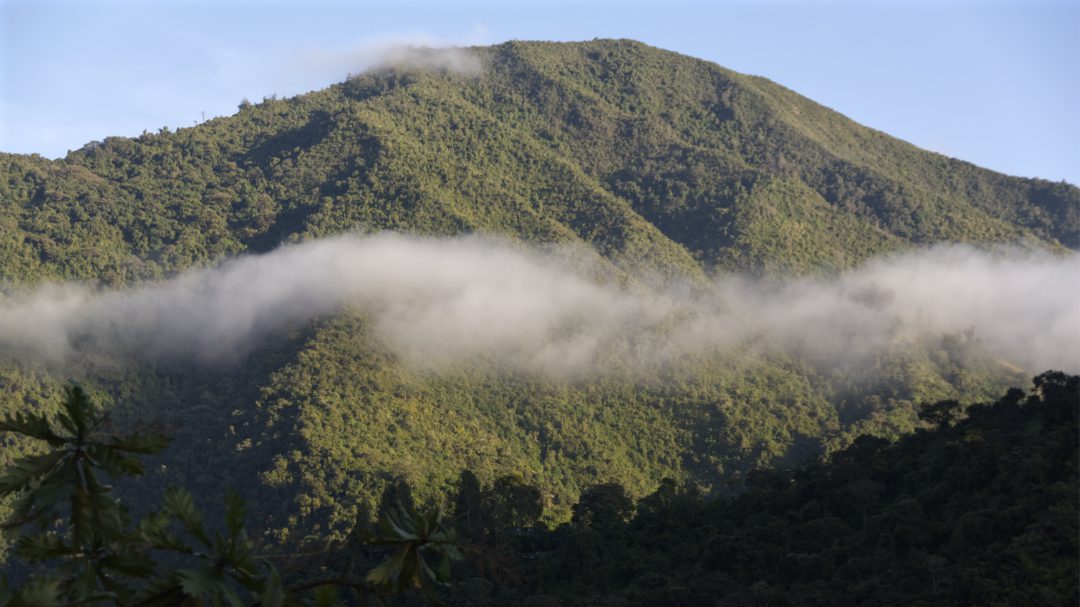
An Early Morning Arrival to Maraksacha
Our day started early with a 6 am pick-up in Quito Tenis, the neighborhood where I was staying with friends. The roads at this hour are easy to navigate as Quito’s infamous rush hour traffic has yet to settle in. We headed towards Pomasqui via the Avenida Occidental, eventually passing Mitad del Mundo and the Pululahua Crater. With no desire to stop, we breezed on by, intent on our destination, the Maraksacha Reserve.
Thank goodness Ale was driving, otherwise I may have missed the sign announcing our arrival. Trust me when I say that Google Maps is your friend when trying to find this place. And not because it’s hidden. It’s more for the warning of the upcoming driveway. You need plenty of time to slow down and take the sharp turn. This is not a road to slam your brakes or fail to use a turn signal.
After we parked, we were greeted by Anita, co-owner of the Maraksacha Reserve. She led us to the garden where a wonderful vista awaited us. With hardly a cloud to be seen, the bright blue sky and the dark-green, forested mountains provided a stunning backdrop to a garden full of flowering plants, low lying bushes, and a few trees tall enough to provide interest and places for birds to perch.
I was taking photos a few minutes before 7 am, not even an hour from when we left Quito. That’s how close the Maraksacha Reserve is to the city.
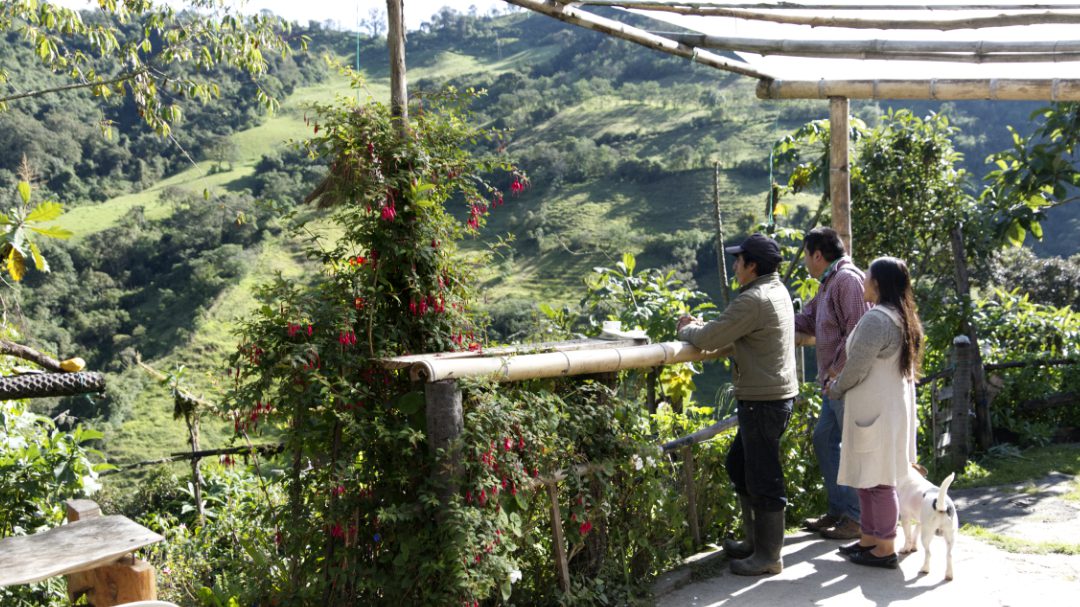
Admiring the Birds
The feeders were already active, birds bopping around in the trees, hovering near the feeding station located directly in front of a bar height table. Soon after setting up to birdwatch, Anita brought us cups of delicious hot coffee and a tasty morning snack to fortify us for the upcoming photography session.
While Alejandro is as an avid photographer like myself, he is also an expert birding guide. He had the names of birds at the tip of his tongue, often before I had even framed the question, “What bird is that, Ale?”
Our first visitor was a White-winged Brushfinch which hopped along the branch towards the plantain feeder. It always arrived by the same path, its rusty orange crown shining in the early morning sunlight.
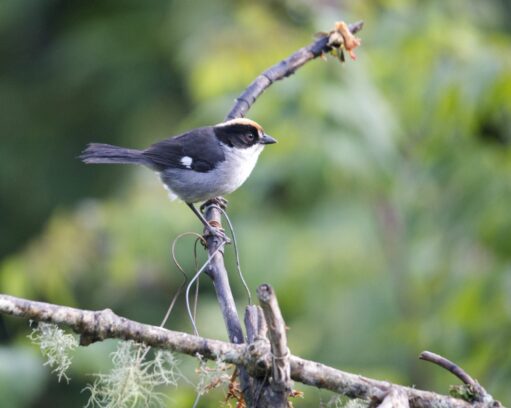
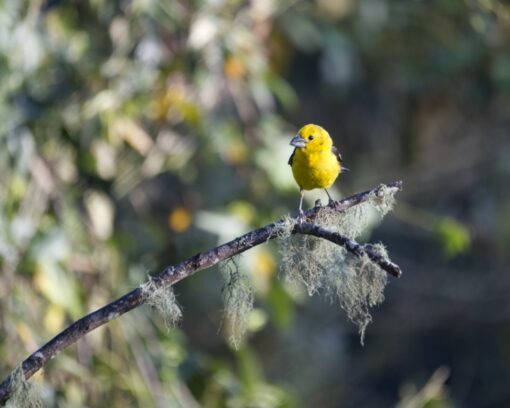
It was soon joined by a pair of Golden Grosbeaks, birds best known for living in the dry habitat found in and around Mitad del Mundo and Parque Jerusalem. At Markasacha, it shares territory with birds better known for living in the cloud forest, like the Blue-capped and the Blue-winged Mountain Tanagers.
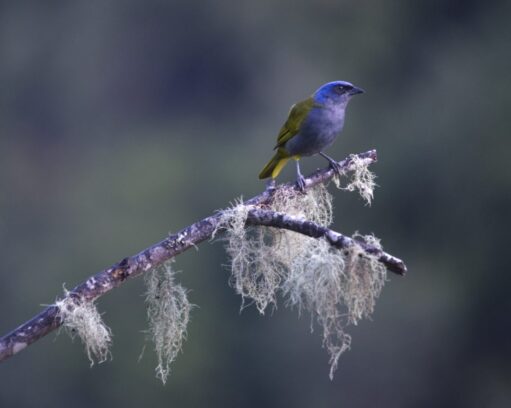
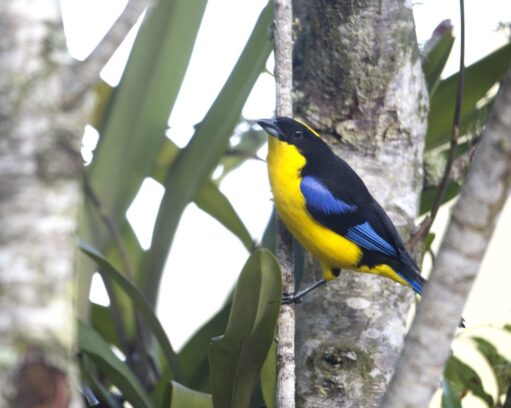
A Privileged Location
Lying in the confluence of different habitats is a large reason why it is possible to observe so many different species in this single location. If you check out the Maraksacha Reserve’s hotspot on eBird, you will see that there have been observations of 139 species, an incredible number of birds for a newly founded project that is only a couple of years old.
But it isn’t only these two habitats. I had thought when I first arrived that the reserve’s proximity to the highway would be a huge problem and prevent many birds from visiting. But I couldn’t have been more wrong.
The house and garden are located on the very edge of a ravine, one so steep that it makes farming difficult. At its base runs the Calicali River. Across the way, the cloud forests climb from the river’s edge to ridgetops where a few intrepid farmers have begun to cut down trees for cattle pasture. Along the western side of the property, the reserve borders the 14,000 acre Maquipucuna Reserve, known for its conservation of native cloud forests for the past 35 years.
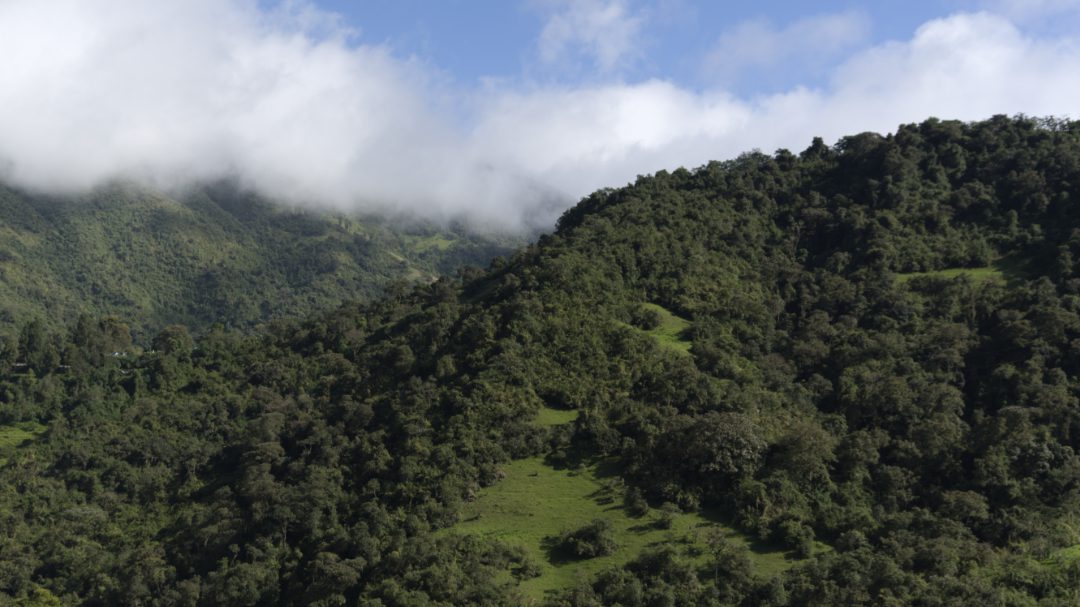
This is a stunning combination of habitat – river, ravine, dry desert to the immediate east, and damp cloud forest to the immediate west.
It is so stunning that it isn’t only birds that come to enjoy it. There have also been sightings of the vulnerable Andean Spectacled Bear as it passes through, looking for some of its favorite food, zuro, a native bamboo. Without camera traps, it is difficult to know what other animals might call the Maraksacha Reserve home. But as a new project that extends a vital wildlife cooridor, it is likely that it is home to far more than many people realize.
A Morning of Prime Bird Photography
On a first visit to a location, I often leave with very few pictures. It can take me a while to find the best angles and study the birds to know how to best capture an image that sings. But I left Maraksacha with more than my fair share of good photos.
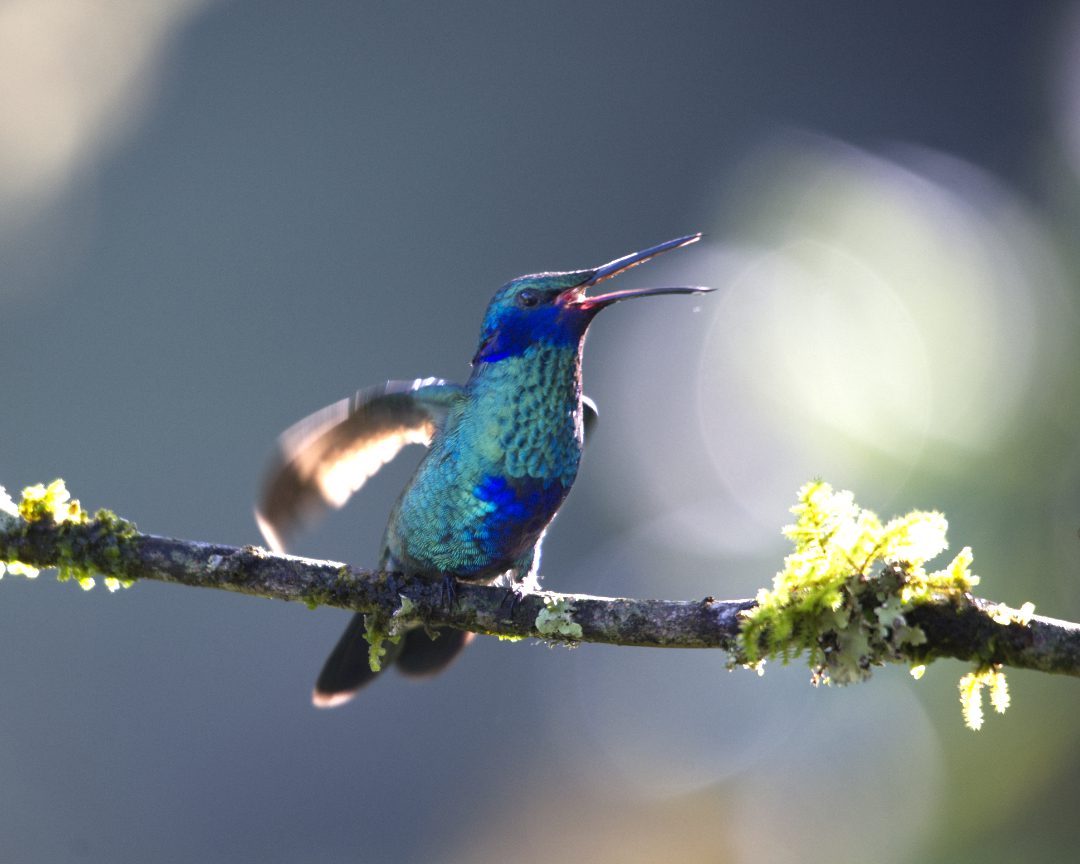
One of the surprises included the Andean Guan with its tiny crop of distinctive red feathers that it wears like a choker at its neck. This rather turkey-like bird is a rusty, dark brown with gentle gray edges bordering the feathers than run along its neck and breast. This bird is fun to photograph and, once again looking at eBird, it is a common visitor to the feeders.
Without even asking, I think I know Alejandro’s favorite bird of the day simply from the excited sound he made when pointing out the Red-crested Cotinga perched on a tree in the distance. Unfortunately for us, it chose to keep its brilliant red crest down for the morning. It looked like an otherwise plump, gray bird in the distance. Ever hopeful, I believe there is a good chance this consistent visitor will be back and maybe on another visit I can get a better photo.
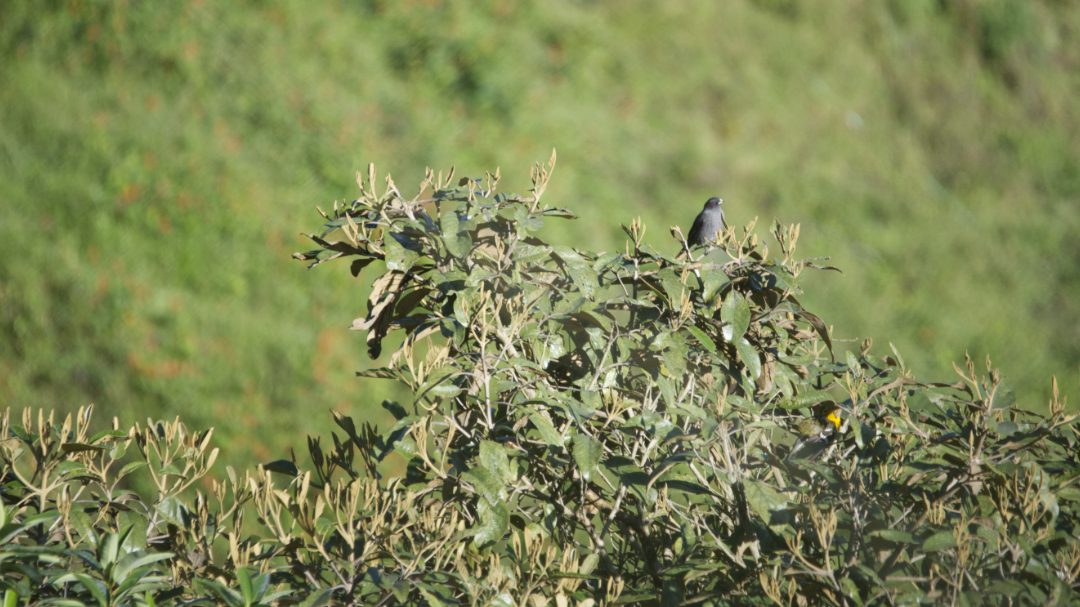
Towards the end of the morning, we were fortunate to see a lovely Crimson-mantled Woodpecker. While not an uncommon bird, I have rarely seen one come so close. In the past, I have observed them in dense forests on an overcast days that offer only dim light. Imagine my delight to see one perched in bright sunlight with a simple backdrop that allows for a nicely blurred background in the final image.
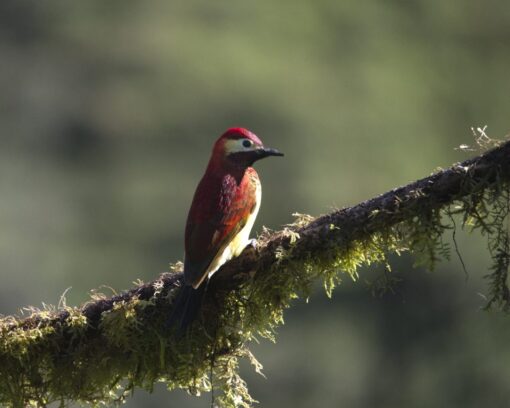
But by far, my favorite subject of the day were the hummingbirds, especially the Sparkling Violear. This hummingbird and I have a special connection. When I first moved to Quito and was walking in my new neighborbood, this is the first hummingbird I saw. It was visiting the bright red flowers of a bottle brush tree, sipping nectar. With my limited abililties of the time, I snapped photo after photo. None of them did this beautiful bird justice.
Years later, I have had several opportunities to photograph this lovely bird. But rarely have I had such close and easy access. The feeders at Maraksacha attract especially bright and beautiful hummers… maybe it was the morning sunlight, maybe it was mating season and two males just would not leave each other alone. Whatever the reason, I very much enjoyed observing the back and forth taking place just over the rim of my coffee cup. In fact, at times, I had to step back to take a better photo with my long lens!
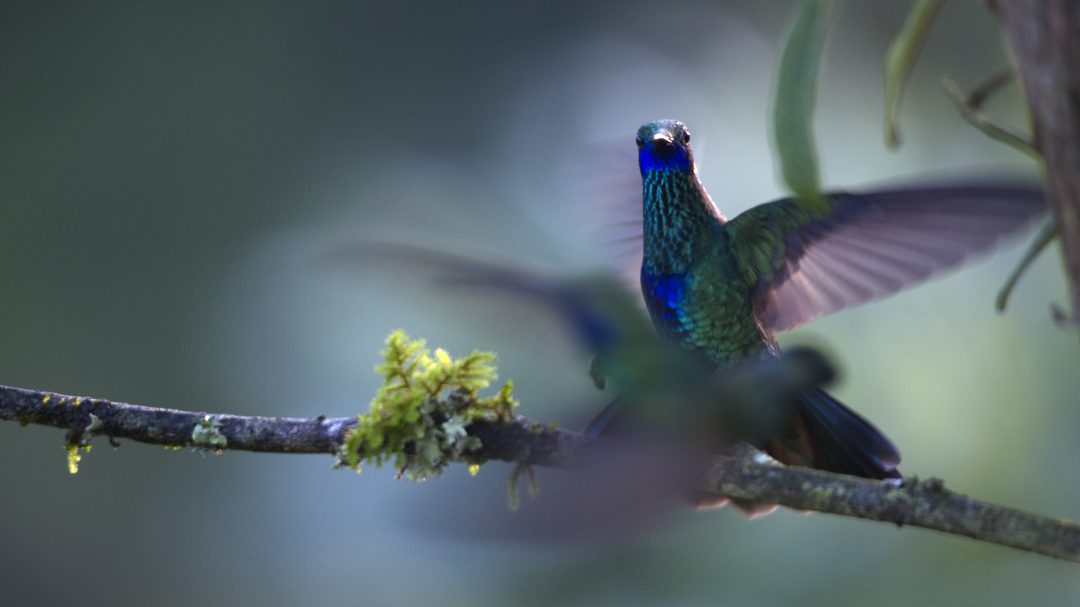
Other hummingbirds visited the feeders and perched nearby on this morning including two different species of woodstars. My favorite was a female White-bellied Woodstar that perched on a slight, curved branch about as thick as my pinky finger. The bright sunlight reflected off the dryish white moss on the branch and the muted dark background allows the little hummingbird to take center stage.
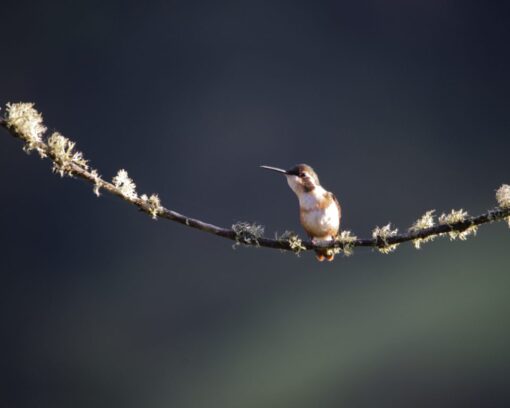
In case you couldn’t tell, I really enjoyed my short morning at the Maraksacha Reserve. Soon, I’ll be writing more about a lucky twist of fate that convinced Vinicio and Anita to step into the role of conservationists. In the meantime, if you find yourself on the road to Mindo, make sure to contact this kind couple and arrange to visit. Or talk to your favorite birdwatching guide about adding a new destination to your next West Slope itinerary!
Information For Your Trip
The Maraksacha Reserve lies on the E-28 between Calicali and Nanegalito. Since it lies on a paved road, any vehicle is appropriate for the trip. We do recommend making a reservation in advance. You can contact Anita and Vinicio on Instagram, Facebook, or WhatsApp: +593 99 882 6980.
- Direction by Car, use WAZE and look for the Maraksacha Reserve.

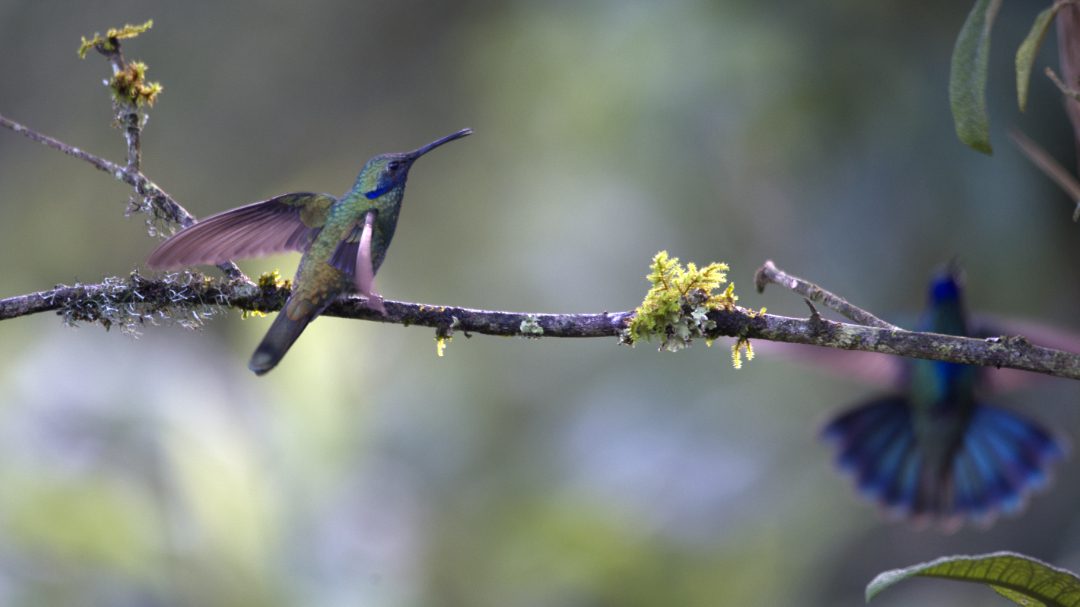









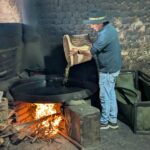


Want to read more about Maraksacha? Check out Dr. Stephen Moss’s article from the Guardian:
https://www.theguardian.com/environment/article/2024/jun/01/more-profitable-than-farming-how-ecuadors-birding-boom-is-benefiting-wildlife